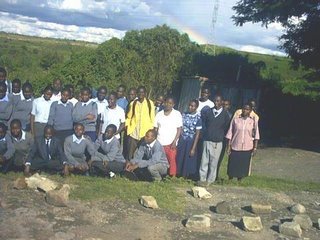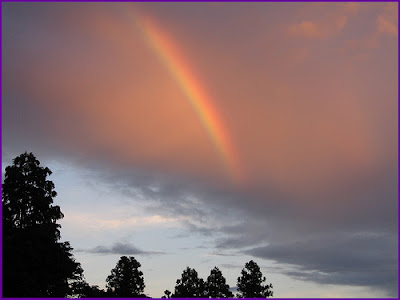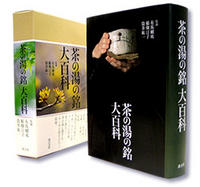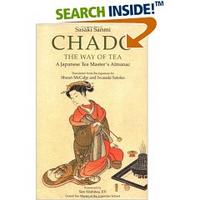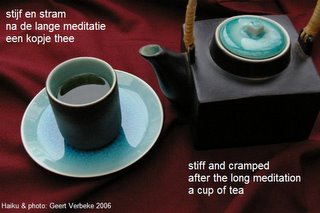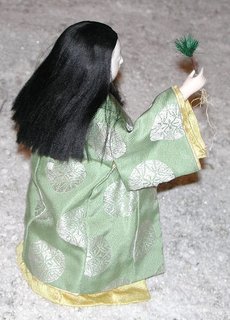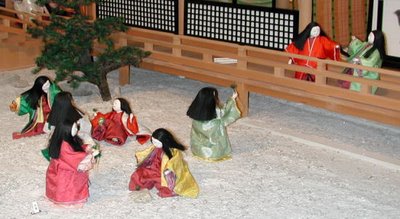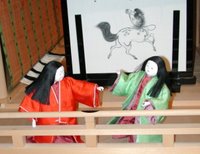:::::::::::::::::::::::::::::::::::::::::::::::::::::::::::::::::::::::::::::::::::::::::::::::::::::
Ramadan, Ramadhan, Ramazan
***** Location: Muslim Regions
***** Season: Non-seasonal Topic
***** Category: Observance
*****************************
Explanation
Ramadan (Ramadaan, ; variations Turkish: Ramazan, Ramazaan)
is the ninth month of the Islamic calendar, which lasts 29 or 30 days. It is the Islamic month of fasting, in which participating Muslims refrain from eating, drinking, smoking and sex during daylight hours and is intended to teach Muslims about patience, spirituality, humility and submissiveness to God.
Muslims fast for the sake of God (Allah) and to offer more prayer than usual.
Compared to the solar calendar, the dates of Ramadan vary, moving backwards by about eleven days each year depending on the moon; thus, a person will have fasted every day of the Gregorian calendar year in 34 years' time.
Muslims believe Ramadan to be an auspicious month for the revelations of God to humankind, being the month in which the first verses of the Qur'an were revealed to the Islamic prophet, Muhammad.
Origins of Ramadan
The word Ramadan is derived from an Arabic root R-M-Ḍ, as in words like "ramida" or "ar-ramaḍ" denoting intense heat, scorched ground and shortness of rations. Ramadan, as a name for the month, is of Islamic origin. Prior to Islam and the exclusion of intercalary days from the Islamic calendar, the name of the month was Natiq and the month fell in the warm season. The word was thus chosen as it well represented the original climate of the month and the physiological conditions precipitated from fasting.
In the Qur'an, God proclaims that "fasting has been written down (as obligatory) upon you, as it was upon those before you".
According to a hadith, this might refer to the Jewish practice of fasting on Yom Kippur.
© More in the WIKIPEDIA !

:::::::::::::::::::::::::::::::::::::::::::::::::::::::::::::::::::::::::::::::::::::::::::::::::::::
Ramadan is the ninth month of the Muslim calendar. Ramadan ends with the festival of Eid al-Fitr, which in 2005 occurs on November 4 -- literally the "Festival of Breaking the Fast". Lasting for the entire month, Muslims fast during the daylight hours and in the evening eat small meals and visit with friends and family. It is a time of worship and contemplation. A time to strengthen family and community ties. Charity and good deeds are always important in Islam and they have special significance at the end of Ramadan. As the month draws to a close, Muslims are obligated to share their blessings by feeding the poor and making contributions to mosques.
Anthony Tidswell
http://francevoila.com/archives/118.html
:::::::::::::::::::::::::::::::::::::::::::::::::::::::::::::::::::::::::::::::::::::::::::::::::::::
quote
Islamic calendar
The Hijri calendar, also known as the Muslim calendar or Islamic calendar , (Arabic: التقويم الهجري; at-taqwīm al-hijrī; Persian: تقویم هجری قمری taqvim-e hejri-ye qamari; Turkish: Hicri Takvim; Urdu: اسلامی تقویم Islami taqwīm; Indonesian: Kalender Hijriah; Malay: Takwim Hijrah) is
a lunar calendar consisting of 12 lunar months in a year of 354 or 355 days. It is used to date events in many Muslim countries (concurrently with the Gregorian calendar), and used by Muslims everywhere to determine the proper day on which to celebrate Islamic holy days and festivals.
The first year was the Islamic year beginning in 622 CE during which the emigration of the Islamic prophet Muhammad from Mecca to Medina, known as the Hijra, occurred. Each numbered year is designated either H for Hijra or AH for the Latin anno Hegirae (in the year of the Hijra).
The current Islamic year is 1433 AH, from approximately 26 November 2011 (evening) to 14 November 2012 (evening).
© More in the WIKIPEDIA !
The Islamic calendar is a lunar calendar, and months begin when the first crescent of a new moon is sighted. Since the Islamic lunar calendar year is 11 to 12 days shorter than the solar year and contains no intercalation,
Ramadan migrates throughout the seasons.
The Islamic day starts after sunset. The actual and estimated start and end dates for Ramadan in 2007–2017 were and are as follows:
CE / AD --- AH --- First day --- Last day
2007 --- 1428 --- 13 September -- 12 October
2008 --- 1429 --- 1 September --30 September
2009 --- 1430 --- 22 August -- 20 September
2010 --- 1431 --- 11 August -- 9 September
2011 --- 1432 --- 1 August -- 29 August
2012 --- 1433 --- 20 July -- 18 August
2013 --- 1434 --- 9 July -- 7 August
2014 --- 1435 --- 28 June -- 27 July
2015 --- 1436 --- 18 June -- 16 July
2016 --- 1437 --- 6 June -- 5 July
2017 --- 1438 --- 27 May -- 25 June
© More in the WIKIPEDIA !
Ramadan in 2012
starts on Friday, the 20th of July and will continue for 30 days until Saturday, the 18th of August.
Based on sightability in North America, in 2012 Ramadan will start in North America a day later - on Saturday, the 21st of July.
Note that in the Muslim calander, a holiday begins on the sunset of the previous day, so observing Muslims will celebrate Ramadan on the sunset of Thursday, the 19th of July.
source : www.when-is.com
:::::::::::::::::::::::::::::::::::::::::::::::::::::::::::::::::::::::::::::::::::::::::::::::::::::
The Japanese word kisetsu 季節, translated as season,
refers to the climate changes of
spring, summer, autumn and winter.
The English word season can also refer to other things, for example
a certain period of time.
source : www.thefreedictionary.com
Therefore the expression "Season of Ramadan" is not linked to climate, but to a special period of time.
- Reference : season of Ramadan -
Differences and Similarities between
the Muslim Season of Ramadan and
the Christian Season of Lent
source : www.essay-911.com
Thanks to Alan Summers
for the discussion of the differences.
*****************************
Worldwide use
ramadan ラマダン
:::::::::::::::::::::::::::::::::::::::::::::::::::::::::::::::::::::::::::::::::::::::::::::::::::::
India
Empty stomach
sweeter emptiness --
Ramadan
Ram Krishna Singh
August 2011
crescent moon-
too parched to intone
Ramadan prayers
Angelee Deodhar
August 2013
:::::::::::::::::::::::::::::::::::::::::::::::::::::::::::::::::::::::::::::::::::::::::::::::::::::
Kenya
The End of Ramadan (Idd ul Fitr) (the spelling used in Kenya) is a public holiday for the Muslim population. Click on the given link for more.
Isabelle Prondzynski
:::::::::::::::::::::::::::::::::::::::::::::::::::::::::::::::::::::::::::::::::::::::::::::::::::::
Turkey
Berat Kandil (Leylatul Berat, Laylatul Barat)
is the 14th/15th of the month of Shaban, night of the full moon before the beginning of Ramazan.
Leylatul Berat in Arabic. "Berat Eve."
:::::::::::::::::::::::::::::::::::::::::::::::::::::::::::::::::::::::::::::::::::::::::::::::::::::
Yemen
"moon of faith" , the moon in Ramadhan
It is also the name of a plum juice drunk as the first thing after a day of fasting.
moon of faith
entered by an ant
my world today
Heike Gewi, Yemen
YEMEN SAIJIKI
*****************************
Things found on the way
Verses from Quran
Recital loud and soft,
Under gasolin-lit homes
- Shared by Mokhtar Sah Malik, Malaysia -
Haiku Culture Magazine, 2013
The Quran - literally meaning "the recitation",
also transliterated Qur'an or Koran, Turkish: Kur'an, is the central religious text of Islam, which Muslims believe to be the verbatim word of God (Arabic: Allah). It is widely regarded as the finest piece of literature in the Arabic language.
© More in the WIKIPEDIA !

Homage to our
Beloved mother
Last day of Ramadan
Mokhtar Sah Malik, August 2013
*****************************
HAIKU
earthquake in
Ramadan ~ "La illaha il Allaha"
in every mouth
silent earth, after
the absurd quake ~ Ramadan
twilight Nimaz
from the debris
a child still alive ~ Allaha's
grace in Ramadan
Zakat is Allaha's ~
all receive their share
of divine Grace
Narayanan Raghunathan, Autumn 2005
Remembering the huge earthquake in Pakistan and Indian Himalaya
xxxxxxxxxxxxxxxxxxxxxxxxxxxxx
black and white threads
amongst the rubble and dust
Ramadan earthquake
Iftar -
("iftar" means "breakfast" and the community meal by which Muslims break their fast during Ramadan)
from the classroom dead
placed in his father's arms
iftar is very sweet
camping in the park
they make an iftar picknick
with foreign flour
Siyam (or "sawm") -
"Siyam" is the pillar of faith to keep the fast of Ramadan
one small boy
in an eighteen inch void
observes Siyam
Zakat -
"Zakat" means "almsgiving", the duty to distribute alms and to help the needy.
this year
the Christians also
share in Zakat
so many in need
giving Zakat to cousins
in a childless village
white threads
amongst the rubble
Ramadan earthquake
camping in the park
they make an iftar picnic
with foreign flour
Eryu
:::::::::::::::::::::::::::::::::::::::::::::::::::::::::::::::::::::::::::::::::::::::::::::::::::::
Zakat (with an accent on the second syllable) means "sunset" in Russian.
Zakat solntsa -
nebo sine-lilovo-
oranjevoe
Sunset:
the sky is blue-purple-
orange
Zhanna P. Rader
:::::::::::::::::::::::::::::::::::::::::::::::::::::::::::::::::::::::::::::::::::::::::::::::::::::
Ramadan--
a glass of water
untouched
Roh Mih, Philippines 2005
Haiku from the Philippines
:::::::::::::::::::::::::::::::::::::::::::::::::::::::::::::::::::::::::::::::::::::::::::::::::::::
Ramadan
the muezzin rouses
the lazy rooster

Djenné, Mali, West Africa
© Haiga by Norman Darlington
http://eirmode.com/mm/pic.cgi?a=m&p=2
......................................
muezzin's call
a kite's silhouette
beneath orange clouds
muezzin's call
a one-horned cow pushes
at the hotel gate
-- Johannes Manjrekar, India
http://haiku.cc.ehime-u.ac.jp/nobo/20060927/18352.html
:::::::::::::::::::::::::::::::::::::::::::::::::::::::::::::::::::::::::::::::::::::::::::::::::::::
Ramadan -
power off
at school
after fresh dates
the face meets dust --
Allahull-Akbar
the date bowl
a hot spot for ants too ...
Al-Fatoor
[Al-Fatoor = Iftar]
Heike Gewi, Yemen, September 2008
*****************************
Related words
***** Ramadan ends (Idd ul Fitr)
***** ..... Ramazan, Berat Kandil Turkey
Leylatul Berat, Laylatul Barat
***** Sambosa, samosa
Food during the Ramadan. Yemen
***** Minaret, tower of a mosque
[ . BACK to WORLDKIGO . TOP . ]
:::::::::::::::::::::::::::::::::::::::::::::::::::::::::::::::::::::::::::::::::::::::::::::::::::::
:::::::::::::::::::::::::::::::::::::::::::::::::::::::::::::::::::::::::::::::::::::

